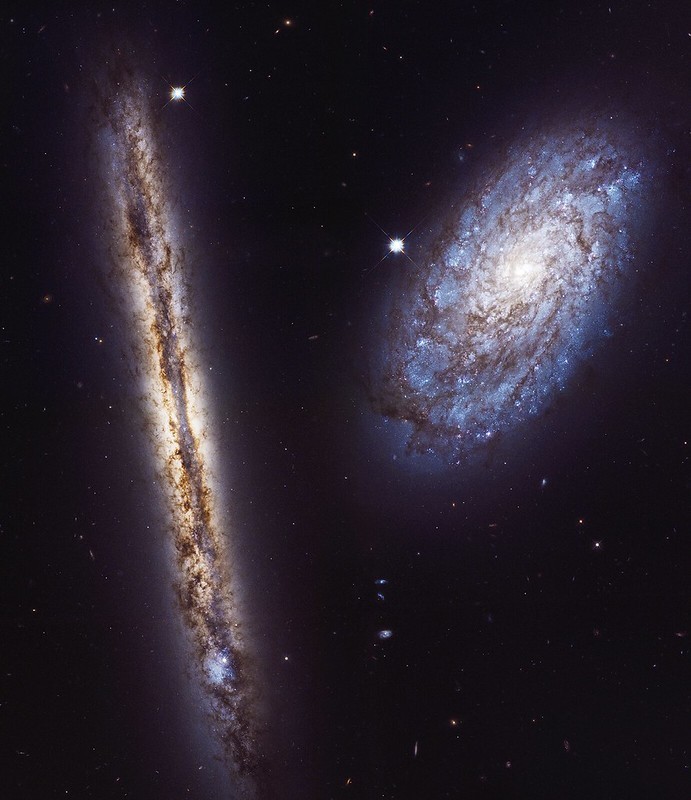NASA's Hubble Space Telescope captured a breathtaking portrait of two spiral galaxies that resemble our own Milky Way.
The starry pair was recently shared by NASA on its social media accounts but it was photographed on January 2-22, 2017. This stunning portrait offers a view of what our galaxy would look like from an outsider's perspective.

Starry Pair
The two galaxies are named NGC 4302 and NGC 4298, respectively. Although they appear dissimilar, they are remarkably alike in their structure and contents. NGC 4302 is an edge-on galaxy, while NGC 4298 is tilted at a 70-degree angle.
This explains why the pinwheel-like structure is less visible in NGC 4298 than it is in other spiral galaxies. Contrary to NGC 4298, the dust within the disk of NGC 4302 is silhouetted by bright lanes of stars, giving the galaxy a darker and redder appearance compared to its companion.
Additionally, a vast blue patch is visible, which seems to be a recent site of star formation.
Both galaxies are in the Virgo Cluster, which is comprised of almost 2,000 galaxies and is around 55 million light-years away from Earth.
They were discovered in 1784 by William Herschel and were initially known as "spiral nebulas" before Edwin Hubble discovered they were galaxies far beyond the Milky Way.
Spiral galaxies, including NGC 4302 and NGC 4298, typically have young star arms that spiral outward from their central region.
Intense Star Formation
According to NASA, these arms are marked by intense star formation, and the galaxies are characterized by a central bulge surrounded by a dimmer halo of stars.
Some spiral galaxies, such as those observed by Hubble, also have bars that extend from the central bulge to the arms.
NGC 4302, seen edge-on, measures about 87,000 light-years in diameter, making it approximately 60% the size of the Milky Way. It has a mass of around 110 billion solar masses, which is one-tenth of the Milky Way's mass.
In contrast, NGC 4298 is tilted and measures about 45,000 light-years in diameter, which is one-third the size of the Milky Way. Its mass is approximately 17 billion solar masses, which is less than 2% of the Milky Way's mass.
The Hubble observations of the starry pair were captured using the Wide Field Camera 3 (WFC3) instrument in three visible light bands. Launched on April 24, 1990, and deployed into low-Earth orbit the following day, the Hubble Space Telescope observes the universe in near-ultraviolet, visible, and near-infrared light from above Earth's atmosphere.
In the last 27 years, the remarkable findings of Hubble have significantly altered the landscape of astronomy and astrophysics.
The portrait of the two galaxies, taken in January 2017, offers a stunning view of these starry wonders. The image provides an idea of what our own Milky Way galaxy would look like if viewed from a different angle.
It is a testament to the power and capability of the Hubble Space Telescope and the boundless wonder and beauty of the universe.
Related Article : NASA Hubble Discovers Saturn's Ring System Heats Planet's Atmosphere-A Never-Before-Seen Phenomenon!

ⓒ 2025 TECHTIMES.com All rights reserved. Do not reproduce without permission.




